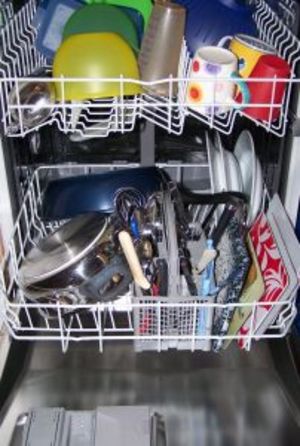For many years, people have been trying to promote a greener way of living in order to prevent any further damage to our planet. One of the biggest things you can do to make the world a healthier place is to reduce your carbon footprint. A carbon footprint is a measurement of the amount of greenhouse gases we produce through every day activities. Things such as driving your car, or even heating your home add to your carbon footprint and contribute to the changes in our environment. While there are many things we need to use in order to live, here are some very simple ways I reduce my carbon footprint without making daily life difficult.
1. Turning off electrical appliances when they aren’t in use
Probably the easiest way I have reduced my carbon footprint is by making sure I don’t leave electrical appliances switched on unnecessarily. Many times people leave the house without turning off the stereo or the computer, but taking that extra few seconds to turn them off has made a difference to my carbon footprint and my electricity bill.
2. Hanging the washing outside instead of using the tumble dryer
Tumble dryers use up a lot of electricity and can produce up to 159kg of CO2 every year – sometimes more, making it one of the highest CO2 producers in the house. Instead of switching on the tumble dryer all the time, I reduce my carbon footprint by hanging the washing out in the garden. If you don’t have a garden, consider buying a clothes airer so you can let your clothes dry naturally inside. It takes a little longer but it is much friendlier to the environment.
3. Walking/Using public transport
It isn’t always possible to walk to every destination, but if you can, you should. Not only will this reduce your carbon footprint, it will improve your own overall health. Using public transport cuts down on CO2 emissions because you aren’t adding to the problem by bringing out another vehicle, just sharing one that is already on the road. I use public transport if I need to go into town to do some shopping sometimes, but mostly I walk if I don’t have to go too far.
4. Sharing
Imagine this scenario. In the living room, you are watching a TV show. Your daughter is upstairs watching the same show in her bedroom because her constant giggling over text messages from her friends is driving you insane, and your son is also watching the same show on a third television because he is too lazy too get up from his bed. Two televisions are being used for no other reason than that they are there. Group the family downstairs and watch together! It will reduce costs and give you valuable time together so it is doubly beneficial. This is something I do quite regularly with my mum, (yes, I am the lazy child who doesn’t want to leave the comfort of my bed!) and it really does help!
5. Using energy saving light bulbs
No doubt you have heard this countless times, but energy saving light bulbs really do make a difference. Almost all of the old style light bulbs have been phased out of the shops to be replaced by energy saving versions now, but there are still some people who continue to use them. Energy saving light bulbs waste less energy than traditional light bulbs, plus they last longer and can be recycled. All of the lights in our house are energy saving now and it feels good to know I am making an effort to reduce my carbon footprint!
6. Purchasing recycled paper only
We use up a lot of paper in our house, so we switched to recycled. Recycled paper uses significantly fewer trees to make.. Producing recycled paper takes less energy than new paper too. A quote from paperspecs.com says, “Trade hardcover and Deluxe editions for the latest Harry Potter book saved the equivalent of 529 football fields of trees.. That is an enormous saving.
7. Growing my own fruit and vegetables
If you have the means to do so, growing your own fruit and vegetables is an excellent way to reduce your carbon footprint. First of all, growing plants helps consumption of CO2. Secondly it cuts down on the use of packaging. When you buy fruit and vegetables, they will always come in some packaging – packaging which gets thrown away and not used again. The vegetables in my garden, can simply be put in a basket and transported straight to the fridge!
8. Only using the dishwasher when I have a full load
So much electricity and water is wasted when you put the dishwasher on for small loads of dishes. The excess energy used on two plates, a bowl, two mugs and a few spoons is better saved and used at the end of the day when there is more to wash up. Better yet, wash the dishes in the sink. I wash dishes in the sink every other day so the dishwasher gets a rest!
9. Buying locally grown food
If you can’t grow your own fruit and vegetables, consider buying locally grown products. This reduces your carbon footprint by easing the amount of travel the food makes to get to your plate! Check out this link for examples of how far food can travel when it is not from your area. I buy locally grown foods when I can because as well as being good to the environment, it’s good to support local traders!
10. Learning and sharing my knowledge
Look at websites on how to reduce your carbon footprint and share your knowledge with your family and friends. They will be grateful for the money saving tips, even if they don’t think about the positive effects they are making on the planet! I have done this myself and hopefully it feels good to know that I am making a difference!
Sources:
Direct gov energy saving



